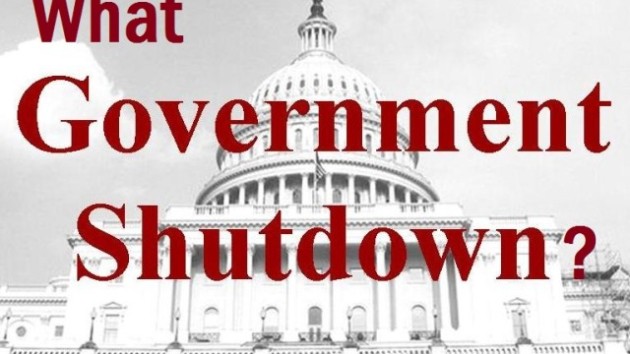A government shutdown is a good thing!
 The government shutdown at midnight is a “sequester” of non-essential government employees. That is a good thing according to Brian S. Wesbury.
The government shutdown at midnight is a “sequester” of non-essential government employees. That is a good thing according to Brian S. Wesbury.
According to Brian S. Wesbury, Chief Economist for First Trust, “It looks like House and Senate won’t come to a budget agreement by midnight and, as a result, the federal government is going to partially shut down starting Tuesday morning. Run for the hills? Armageddon: right? Nope!”
Westbury notes, “As we said a few weeks ago, a shutdown is not as scary as it seems. Money still flows into the Treasury Department and money still flows out, for Social Security or to make interest payments on the debt, for example. The military, border control, food inspections, air traffic, prisons, weather service, and post office, all keep going. And, as long as the Treasury Department has room to continue its ‘extraordinary measures’ or if the debt limit goes up in the meantime, Treasury still pays the debt as it comes due, without missing a beat.”
There have been many government shutdowns.
“Some pundits and analysts say a shutdown will hurt the economy, but it’s hard to say that based on history. The Washington Post recently listed every shutdown from 1976 to 1996. There were 17 shutdowns totaling 110 days. Out of those 110 days, only 6 days were during recessions. That’s very few given that we were in recession about 14% of the time during that twenty–year period,” writes Wesbury.
The last and longest shutdown doesn’t appear to have hurt the economy either writes Wesbury.
“That was the three-week shutdown from mid-December 1995 to early January 1996 under President Clinton. Real GDP grew 2.3% in the year before the shutdown, a 2.9% annual rate in Q4-1995 and then at a 2.6% pace in Q1-1996, despite the shutdown and the East Coast Blizzard, a multiple day massive snowstorm in January that was followed by large floods,” states Wesbury.
So getting rid of the government fat is a good thing for the economy. Perhaps Washington, D.C. staffers and government workers will now understand what their Main Street counterparts are facing.


